
What's the difference between a juicer and a slow juicer?
Compare juicer to a slow juicer
| Juicer | Slow juicer | |
|---|---|---|
| Preparation | Quickly grates | Slowly crushes |
| Feed tube | Wide (not much cutting required) | Narrow (more cutting required) |
| Suitable for | Fruit and vegetables with a lot of moisture | All kinds of fruit, vegetables, nuts, and wheat grass |
| Result | Clear juice | Concentrated juice |
| Purchase | Relatively affordable | Relatively expensive |
Preparation

Juicer: quickly grates
The drum on the inside of the juicer has a grater that spins. When you put the ingredients in at the top, this drum starts spinning fast. Your fruit is being grated and the juice is 'swirled' out of the fruit. Your drink will be ready quickly.
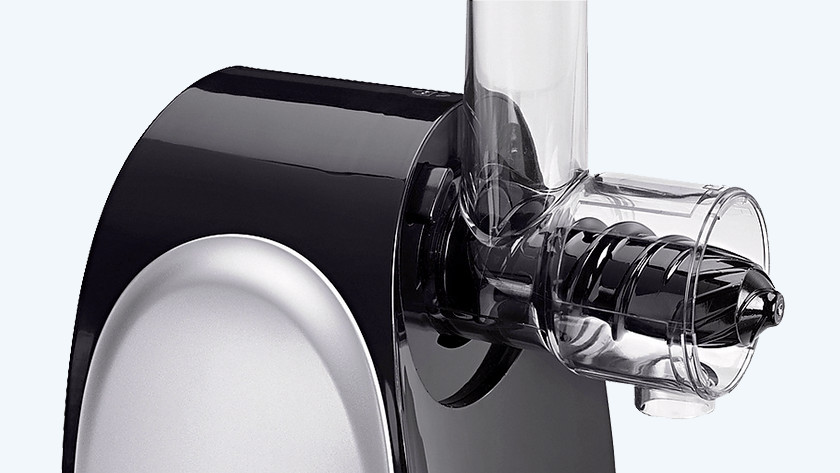
Slow juicer: slowly crushes
A slow juicer 'crushes' your ingredients very slowly with the help of a mortar. For this appliance, the fewer rotations per minute (RPM), the more juice you you'll have. Just as with a juicer, the pulp is then separated from the juice. Making juice with a slow juicer generally takes a little longer than making juice with a juicer.
Feed tube
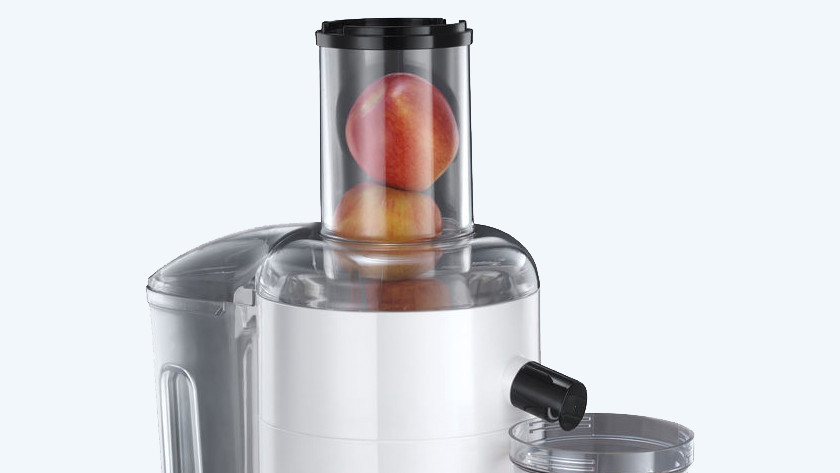
Juicer: not much cutting required
The feed tube of a juicer is often very wide. This allows you to juice an apple in one go with most juicers, so you don't have to cut it into pieces first. As a result, you don't have to spend as much time preparing with a juicer.
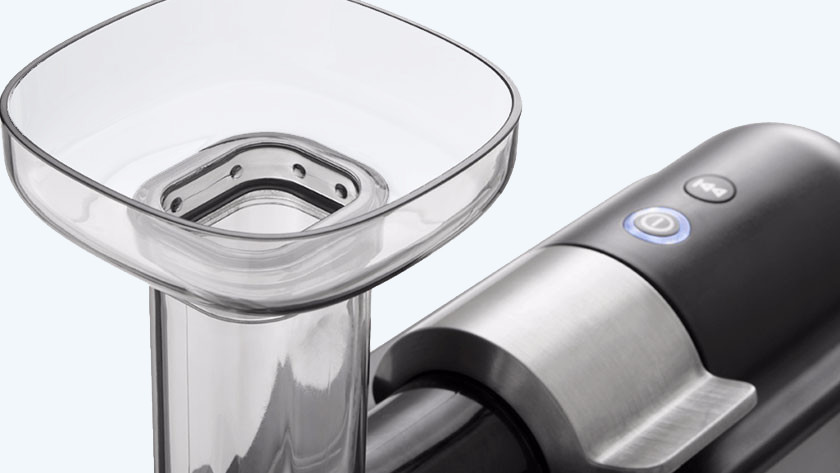
Slow juicer: much cutting required
The feed tube of a slowjuicer is often very narrow. This means you'll first have to cut the ingredients into pieces before juicing them. Due to the cutting work, it takes a little longer to prepare.
Suitable for type of ingredients
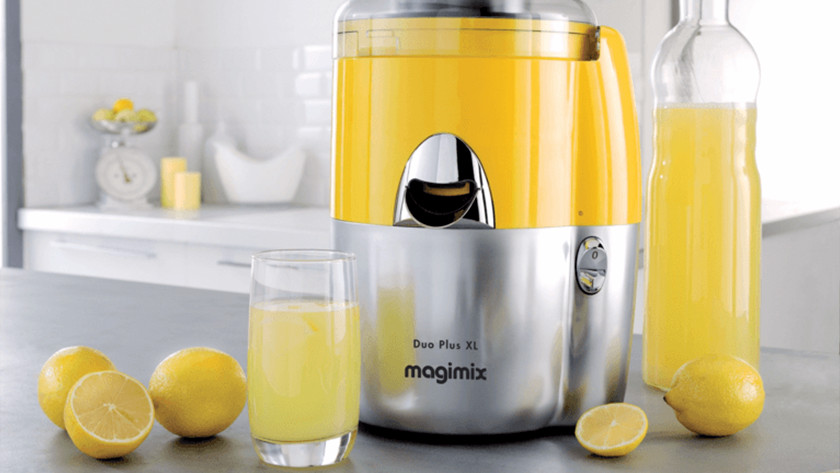
Juicer: fruit and vegetables with a lot of moisture
The amount of juice you extract from your fruit and vegetables with a juicer is comparable to when you squeeze oranges with a citrus press. It's more than enough, but there's still some wet pulp left. A juicer is less suitable for making juice from low-moisture ingredients, such as nuts or bananas.
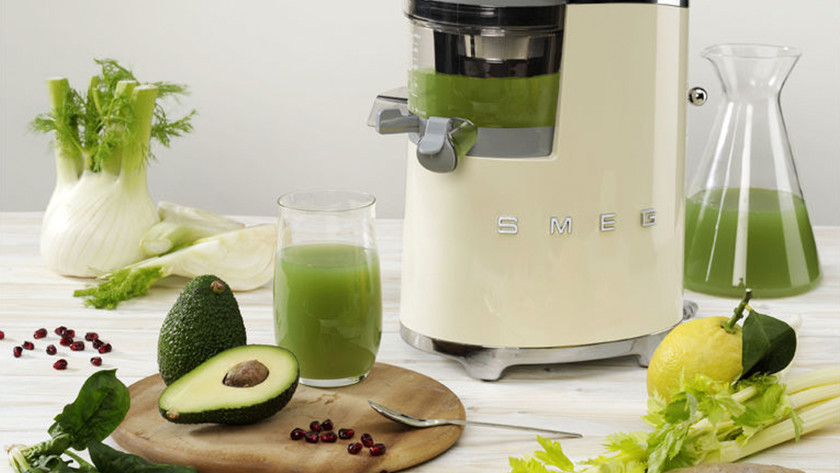
Slow juicer: all kinds of fruit, vegetables, nuts, and wheat grass
A slow juicer extracts almost all the juice from ingredients. This makes it not only suitable for juicing fruit and vegetables, but also for low-moisture ingredients, like leaved vegetables, wheat grass, or nuts. The pulp that remains is completely dry.
Result
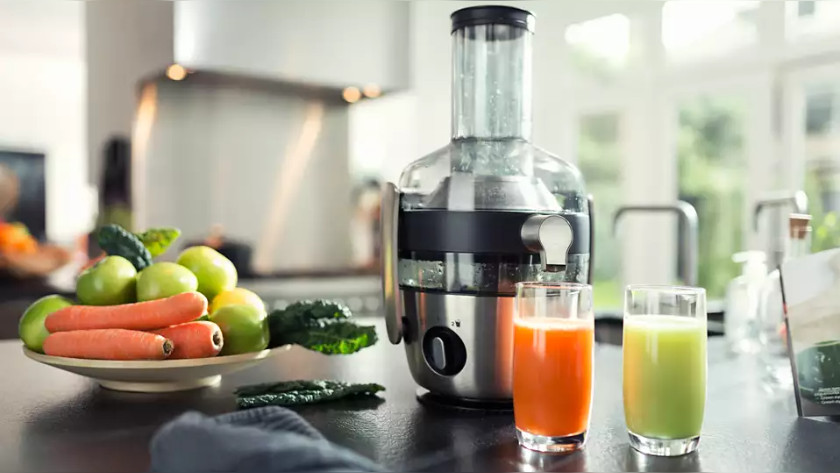
Juicer: clear juice
The juice from a juicer is very clear and looks like lemonade. It does contain fewer fibers than juice from a slow juicer. Because of this, you could say that juice from a juicer is slightly less healthy than juice that you make with a slow juicer. In practice, the nutrients barely differ between the two juices.
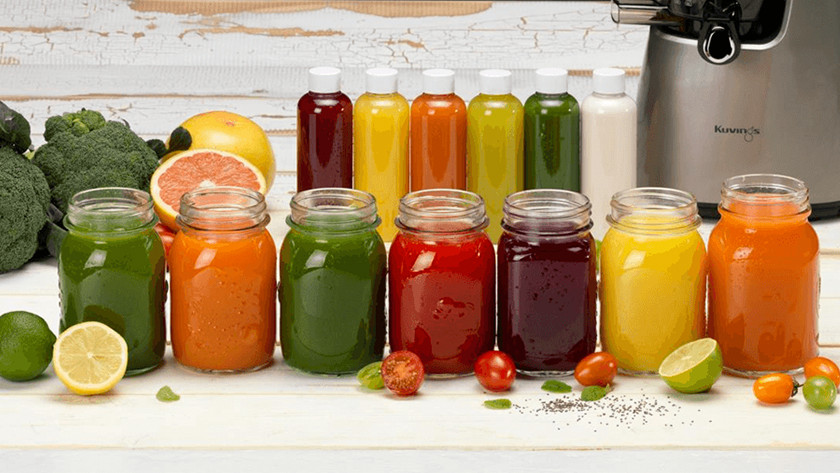
Slowjuicer: concentrated juice
The juice from a slowjuicer is thin, but less clear than with a juicer. That's because more fibers remain thanks to the slow juicing technique. During juicing, no frictional heat is being released. That's why you'll often hear people say the juice from a slowjuicer is healthier than the juice from a juicer. But, these claims aren't scientifically proven.


